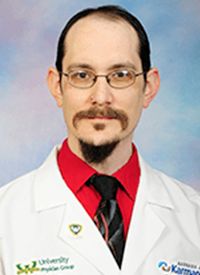Article
MRD Negativity Remains Key Goal in Frontline Myeloma Treatment
Author(s):
Andrew Kin, MD, discusses the shift in goals for frontline treatment in multiple myeloma.
Andrew Kin, MD

Although autologous stem cell transplantation still has a role in the up-front treatment of multiple myeloma, patients are experiencing deeper and more durable responses with go-to combination regimens, such as lenalidomide (Revlimid) plus bortezomib (Velcade) and dexamethasone (VRd), according to Andrew Kin, MD.
“The VRd triplet is still my starting point. High-risk features are starting to be a little bit more important, so you might think about adding daratumumab [Darzalex],” said Kin. “Transplants [are also] still important, even in the era of minimal residual disease [MRD]–negative status. It does still have evidence that it deepens response. That’s the goal: Maximizing our depth of response in the first-line of treatment.”
Such responses were seen in the phase 3 IFM 2009 study, which found that patients who were treated with both VRd and ASCT had higher response rates than those who received VRd alone (59% vs 48%). This group was also able to achieve an improved minimal residual disease (79%) compared with the VRd-only arm (65%; P < .001).
Regimens such as VRd are also being evaluated as part of quadruplet regimens as well with the monoclonal antibody daratumumab, as seen in the phase 3 GRIFFIN trial, in effort to maximize the depth of response in transplant-eligible newly diagnosed patients with myeloma.
In an interview with OncLive® during the 2020 Institutional Perspectives in Cancer webinar on leukemia/kymphoma, Kin, a hematologist/oncologist of Barbara Ann Karmanos Cancer Institute, as well as an assistant professor at Wayne State University, discussed the shift in goals for frontline treatment in multiple myeloma.
OncLive®: How would you define the revolution of frontline treatment in myeloma, especially as it relates to triplet and quadruplet regimens?
Kin: Numerous changes have been happening over the last few years with up-front treatment for newly diagnosed multiple myeloma. [Previously], the evidence was pretty clear that triplet therapy was superior to doublet therapy. Of those, VRd was the gold standard, [as well as] the basis for the large transplant-containing trials.
Since that time, there have been a number of other induction regimens approved in the frontline setting. Most notably, carfilzomib [Kyprolis] with lenalidomide and dexamethasone [KRd], as part of the ENDURANCE trial, was compared head-to-head with VRd in a transplant setting. For standard-risk patients, [investigators] specifically excluded high-risk patients with the exception of t(4;14). In that setting, there was essentially no difference in progression-free survival [PFS] or overall survival, though there was a pretty significant difference in grade 3 cardiorenal and pulmonary toxicities. Survival outcomes did not change, even within the t(4;14) subgroups.
The other big advancement with up-front treatment is incorporating MRD and next-generation technologies. When they were first starting to incorporate and explore MRD as an end point in the IFM 2009 [study], they used flow cytometry, which was only sensitive to 10-4. Now, with next-generation flow cytometry and NGS, we're able to get sensitivities of 10-5 and even 10-6. Data showed, even looking back at IFM 2009, that if [patients] can get that depth of response of 10-6 and be MRD negative, regardless of how they got there, they do very well [in terms of] long-term survival.
A number of studies incorporating monoclonal antibodies, [such as] daratumumab, have [shown] a pretty significant advantage in increasing the proportion of patients who become MRD negative through induction, whether the trial includes transplant or not, as well as consolidation. The GRIFFIN study added daratumumab to VRd [and] was particularly notable in terms of helping patients [achieve] MRD–negative status.
Ultimately, my starting point for thinking about induction regimens remains VRd. That being said, for any patient who experiences neuropathy, while you think they might be a poor candidate for bortezomib, regardless of if they are eligible for transplant, there are a lot of available regimens that you can use to maximize that depth of response.
Similarly, transplant does still have a role. Evidence shows this even in studies that initially show pretty comparable overall responses and PFS [rates] between the transplant arm and the continuation of the care arm, [such as] the FORTE study. However, 1-year follow-up showed a nominal difference between the transplant group, 90% [of whom] are still MRD-negative. That difference is even more pronounced in the high-risk group. Going forward, high-risk cytogenetics are going to play a little bit more of a role. You might want to think about individualizing therapy and incorporating some of those monoclonal antibodies or even quadruplet regimens up front, to make sure that those high-risk patients achieve MRD negativity, if possible. As of right now, though, if a patient is in complete remission but are still MRD–positive, the evidence is not there yet to say that we need to change their regimen or do additional therapy to drive MRD negativity. That’s the next thing [to explore].
References
- Attal M, Lauwers-Cances V, Hulin C, et al. Lenalidomide, bortezomib, and dexamethasone with transplantation for myeloma. N Eng J Med. 2017;375:1311-1320. doi:10.1056/NEJMoa1611750









